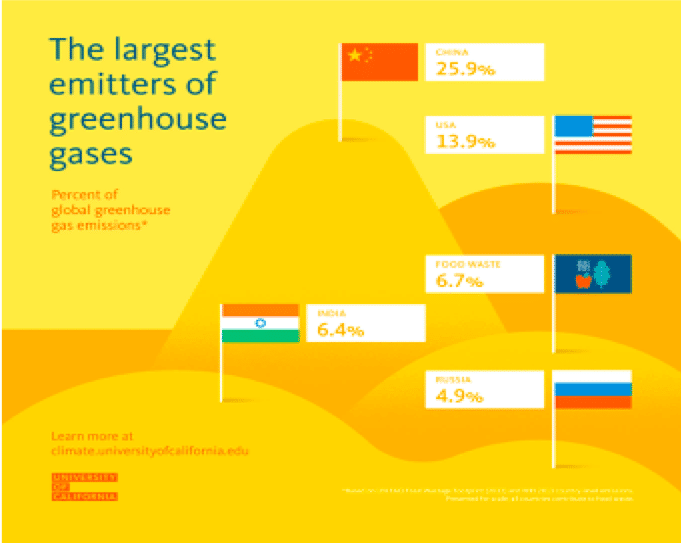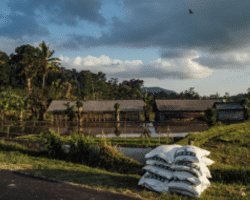Ever wondered the amount of food waste and the impact it has on environmental sustainability?
Around one third of the food that is produced globally is wasted — either spoilt in transit or thrown out by consumers in rather wealthier economies. This waste results in at least 1.3 billion tons of annual food loss, nearly $1 trillion worth in retail prices as stated by National Geographic. This large amount of food wastage significantly effects environment as well. The carbon footprint of food waste is estimated to be 3.3 Giga ton of carbon dioxide. This makes up approximately 7% of all global emissions as published by the United Nations’ Food and Agriculture Organization (FAO). To put this into perspective, if food waste was a country, the greenhouse emissions generated by it would be the third largest among all countries globally, just after the emissions generated by China and the U.S.

Global Greenhouse gas emitters
The food wastage occurs in various forms. Two third of the food waste results from production and distribution activities – either rots on fields or gets spoilt while in transit. The poor transportation networks, the lack of preservation techniques, or improper temperature and humidity conditions can cause the spoilage during transportation. Distribution and transportation of food has been one of the major causes of greenhouse gas emissions. Therefore, wasting food not only means that resources were wasted but the greenhouse gas emissions that it emits also has dangerous effects.
A business case by Arviem AG shows that if a shipping container loaded with 13.4 tons of milk cream products undergoes some kind of damage during transit, it can yield a carbon footprint of up to 101,840 kg of carbon dioxide, for no useful purpose! This not only causes financial loss due to the wasted resources but also creates a negative impact on the shipper’s sustainability key performance indicators.
Can we prevent the environment from gas emissions by better management of food distribution?
Yes, improving cold chain management during transportation can certainly help in reducing carbon footprint of food waste. The life of the food products is dependent on various factors such as internal temperature, humidity and shocks that affect the organisms leading to food spoilage. Thus, these conditions are to be monitored and controlled in order to prevent tons of food waste eventually increasing the carbon footprint.
The technologies available today, such as IoT enabled wireless sensors, can help the shippers to track and trace the conditions of perishable products in real-time and thus ensuring that proper actions can be taken during transit to maintain the product’s quality.
How can the technology of Arviem facilitate better cold-chain management?
Arviem AG addresses the needs of the shippers of perishable products and solves the challenges of obtaining visible and intelligent trade by offering real-time, end-to-end cargo tracking and monitoring services. As the only full-service provider for real-time cargo tracking and monitoring on the market, Arviem provides exceptionally accurate location and quality condition monitoring of cargo throughout the global supply chain.
To learn more about the benefits of monitoring perishable cargo and the advantages of food supply chain traceability and supply chain visibility, download Arviem’s white paper.




